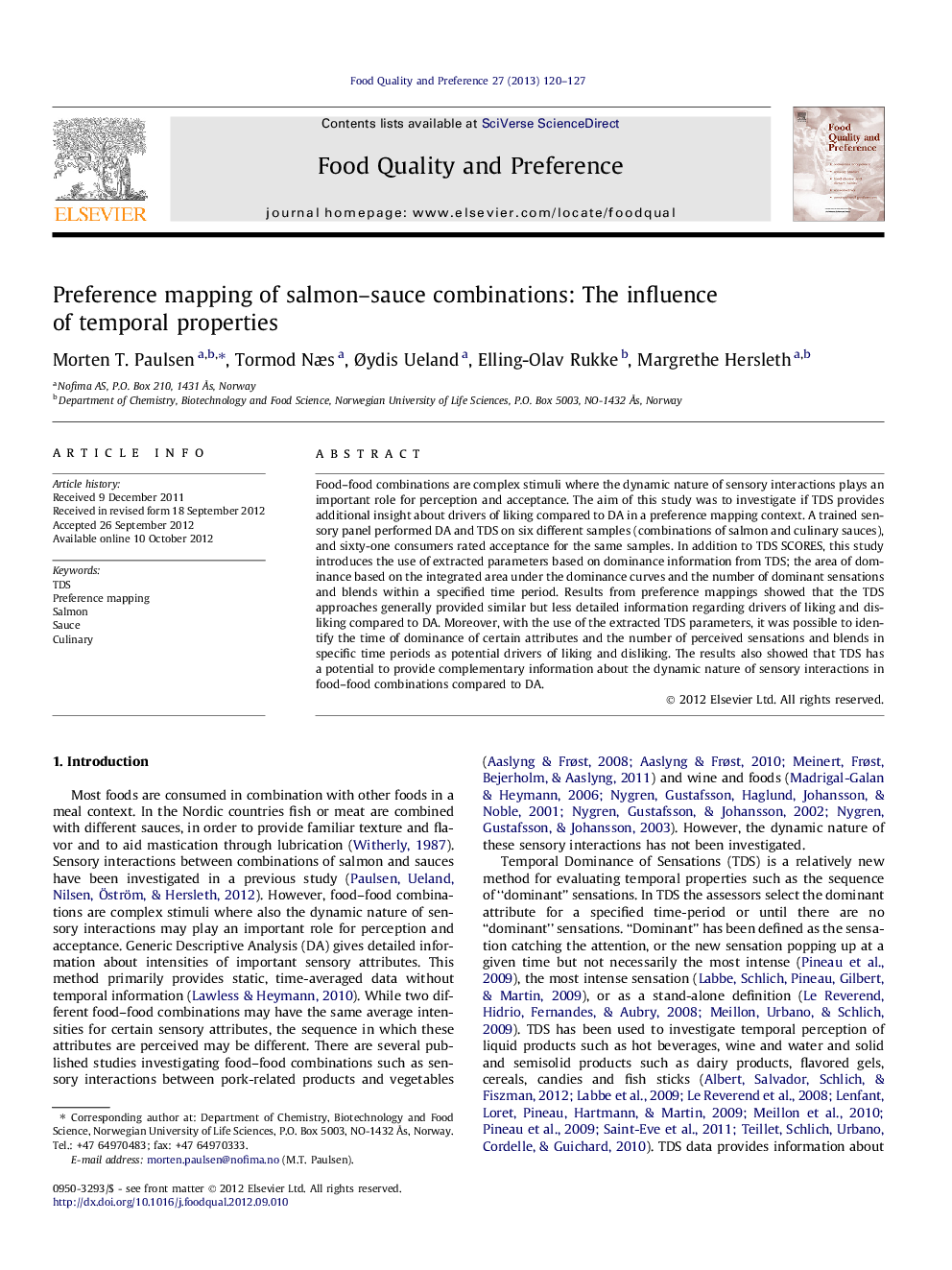| Article ID | Journal | Published Year | Pages | File Type |
|---|---|---|---|---|
| 4317415 | Food Quality and Preference | 2013 | 8 Pages |
Food–food combinations are complex stimuli where the dynamic nature of sensory interactions plays an important role for perception and acceptance. The aim of this study was to investigate if TDS provides additional insight about drivers of liking compared to DA in a preference mapping context. A trained sensory panel performed DA and TDS on six different samples (combinations of salmon and culinary sauces), and sixty-one consumers rated acceptance for the same samples. In addition to TDS SCORES, this study introduces the use of extracted parameters based on dominance information from TDS; the area of dominance based on the integrated area under the dominance curves and the number of dominant sensations and blends within a specified time period. Results from preference mappings showed that the TDS approaches generally provided similar but less detailed information regarding drivers of liking and disliking compared to DA. Moreover, with the use of the extracted TDS parameters, it was possible to identify the time of dominance of certain attributes and the number of perceived sensations and blends in specific time periods as potential drivers of liking and disliking. The results also showed that TDS has a potential to provide complementary information about the dynamic nature of sensory interactions in food–food combinations compared to DA.
